A ranking board displays the distribution and ranking order of metrics across dimensions, concisely showing TOP N items in descending order. For example, you can use a ranking board to display the top 10 cities with the largest sales volumes. This topic describes how to create a ranking board and configure its styles.
Prerequisites
You have created a dashboard. For more information, see Create a Dashboard.
Limits
A ranking board consists of Category (Dimensions), Indicator (Measures), and Auxiliary Indicators (Mea.):
You can specify only one dimension for Category (Dimensions), such as area or product_type.
You can specify only one measure for Indicator (Measures), such as order_number or profit_amt.
You can specify up to three measures for Auxiliary Indicators (Mea.), such as back_point or shipping_cost.
By default, 20 data entries are previewed, and a maximum of 500 data entries can be displayed.
Overview
Scenarios
You can use ranking boards to compare aggregated data from different dimensions and display the rankings.
Advantages
Easy data analysis: You can obtain the data sum and period-over-period comparison results with a few clicks.
Various interactive options: You can add remarks or endnotes to metrics in ranking boards. You can also add links to ranking boards to interact with external systems.
Example

Graph field Configuration
On the Data tab, select the required dimensions and measures:
In the Dimensions list, find Province, and then double-click or drag it to the Category (Dimensions) section.
In the Measures list, find Order Number, and then double-click or drag it to the Indicator (Measures) section.
In the Measures list, find Order Amount, Discount Point, and Profit Amount, and then drag them to the Auxiliary Indicators (Mea.) section.
Click Update. The system automatically updates the chart.
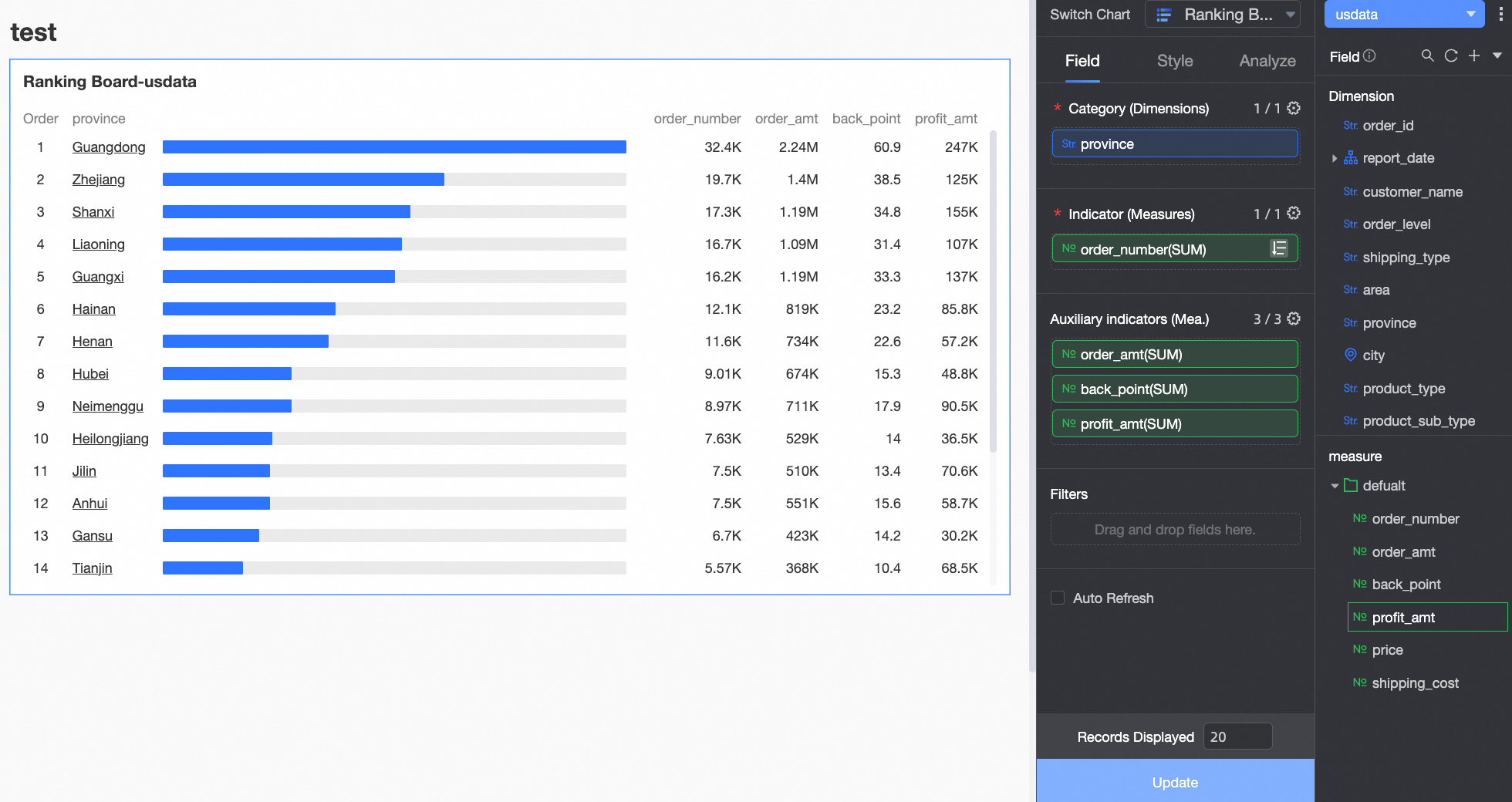
Auto Refresh
After you select Auto Refresh, the system refreshes the ranking board as scheduled. For example, if you select Auto Refresh, enter 5, and then select min, the system automatically refreshes the ranking board every 5 minutes.
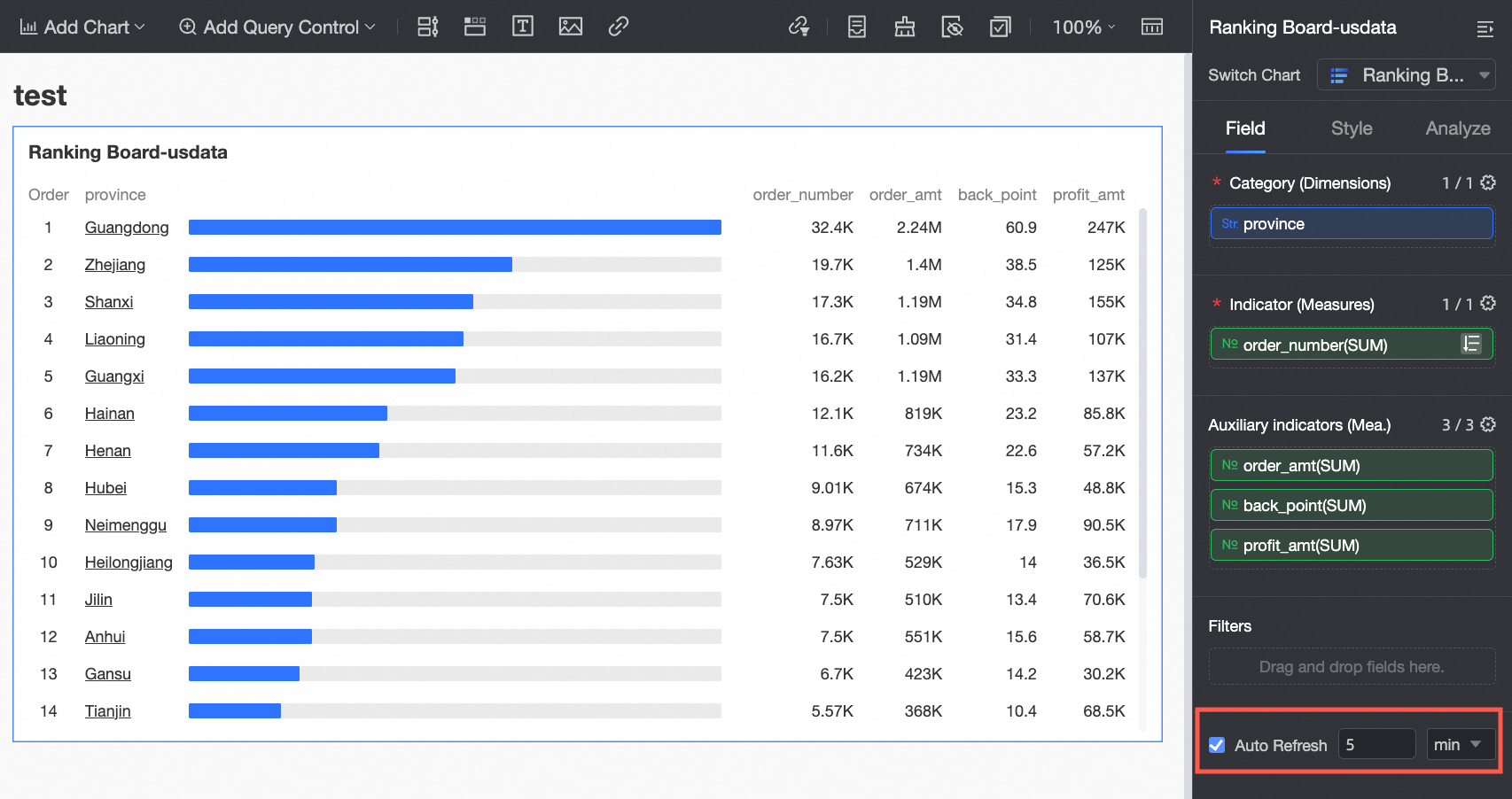
Configure the Styles of the Ranking Board
This section describes how to configure the styles of a ranking board. For information about how to configure the chart title, see Configure the Chart Title.
Basic Style
In the Basic Style section, you can customize the chart style.

Parameter | Description |
Row Spacing | Adjusts the spacing between ranking rows, with a maximum of 50px. |
Column Width | Adjusts the width of each column element in the chart. You can select Adapt to Container or Custom.
|
Tie Handling | Sets how to handle rankings when data values are the same. You can select Ranking or Dense Ranking. You can also customize the text style of ranking data here.
|
Default Display on Mobile | Sets the default number of data ranking entries displayed on mobile devices. The default value is 10. |
Data Bar
In the Data Bar section, you can configure the display style of ranking data bars.

Parameter | Description |
Set Target Value | Supports custom settings for Data Bar. When you do not set a target value, the data bar for the top-ranked data shows 100% of the proportion, and other dimensions' data are displayed proportionally based on the first position. When you have set a target value, the data bar proportion is displayed as Metric Value/Target Value, as shown below:
|
Data Display Mode | Supports three display modes: Show All, Data Bar Only, and Numbers Only.
|
Data Display Position | Only available when Data Display Mode is set to Show All. You can select Left of Data Bar or Right of Data Bar. Note Only the position of Indicator (Measures) data is changed.
|
Data Bar Color | Sets the colors for positive and negative values and background of the data bar. You can enable the gradient effect for data bar colors.
|
Data Bar Border Radius | Supports changing the data bar from square corners to rounded corners. |
Data Bar Height | Supports customizing the data bar height, with a maximum of 100%, a minimum of 10%, and a default value of 67%. |
Column Header
In the Column Header section, you can set whether to display column headers, and configure the header names, Top3 styles, and text styles for column headers.

Ordinal Number
In the Ordinal Number section, you can customize the sorting name and set the TOP3 sorting label styles.
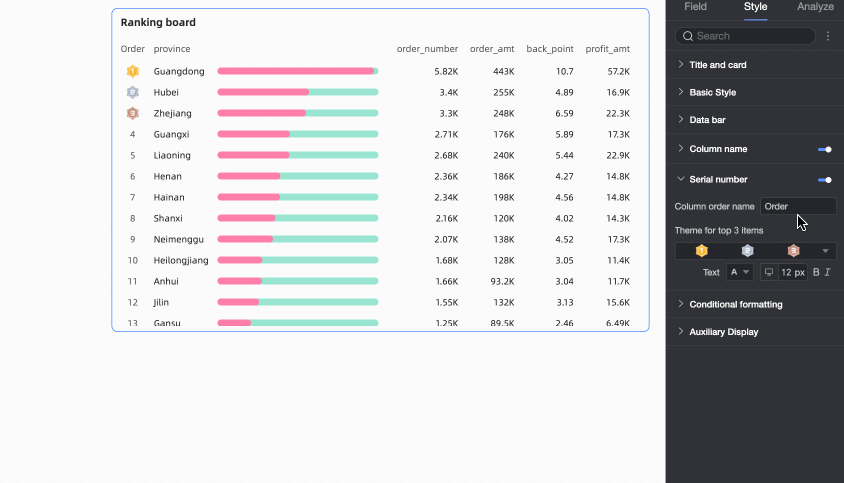
Conditional Formatting
In the Conditional Formatting section, you can set conditional formatting for measure data.

Parameter | Description |
Select Field | Select the measure field for which you want to configure conditional formatting. All measure items can be selected. |
Quick Style | Select from system-provided styles to set the marker icon or font display color for the current measure field.
|
Custom Style | In addition to system-provided quick styles, you can configure custom styles for the current measure field as needed.
|
Sync Style To | You can replicate the conditional formatting settings of a measure to other measures. Note Style synchronization is effective only once. After adjusting the style, you need to synchronize again. |
Auxiliary Display
In the Auxiliary Display section, you can set the display mode and thickness of the scrollbar.
Tooltip
When you hover your mouse over a data bar, a tooltip appears showing the dimension value and measure value corresponding to the data bar.
When you perform a highlight interaction operation, the tooltip in the linked chart can also display the original value of the data.
For example, as shown in the following figure: When you click the North China region on the map, the ranking board highlights the order amounts of various product types in the North China region, and displays the original order amount values before the interaction in the tooltip.

Configure Chart Analysis
Module | Name | Description |
Data Interaction | Drilling | After you set up drilling fields in the field panel, you can set the display style for drilling hierarchy rows here. For more information, see Drilling. |
Linkage | If the data that you want to analyze belongs to different charts or tables, you can configure this feature to associate the charts and tables, and then analyze the data. For more information, see Filter Interaction. | |
Jump | If the data that you want to analyze belongs to different dashboards, you can configure this feature to associate the dashboards, and then analyze the data. Hyperlinks include Parameter Hyperlink and External Link. For more information, see Hyperlink. | |
Analysis Alert | Auxiliary Line | An auxiliary line can be used to show the difference between the value of a measure and the reference value indicated by the auxiliary line. The reference value can be a fixed value or a calculated value. You can use the following calculated values: average, maximum, minimum, and median. For more information, see Analysis Alert. |
Annotation | If data in a chart is abnormal or requires additional attention, you can highlight the data or add icons, notes, or data points. This helps you detect exceptions and perform subsequent operations. For more information, see Annotation. | |
What to do next
When other users need to view the dashboard, you can share the dashboard with specific users. For more information, see Share a Dashboard.
When you need to create complex dashboards with navigation menus for thematic analysis, you can integrate the created dashboards into a BI portal. For more information, see BI Portal.
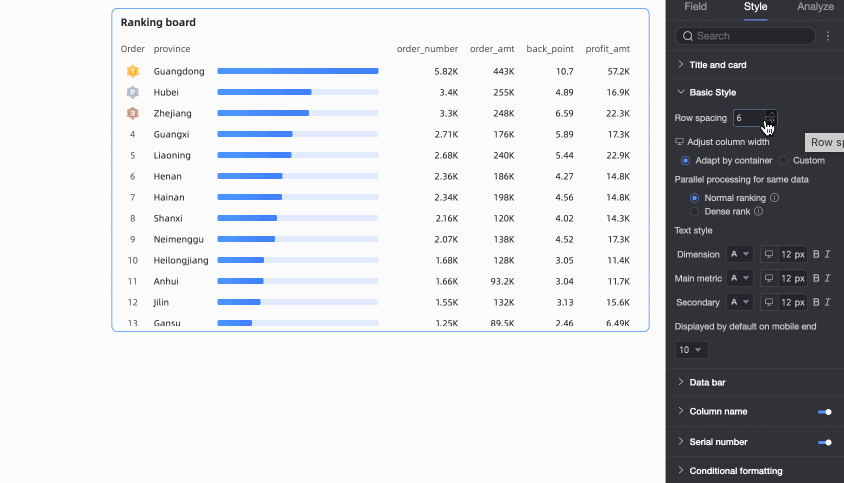

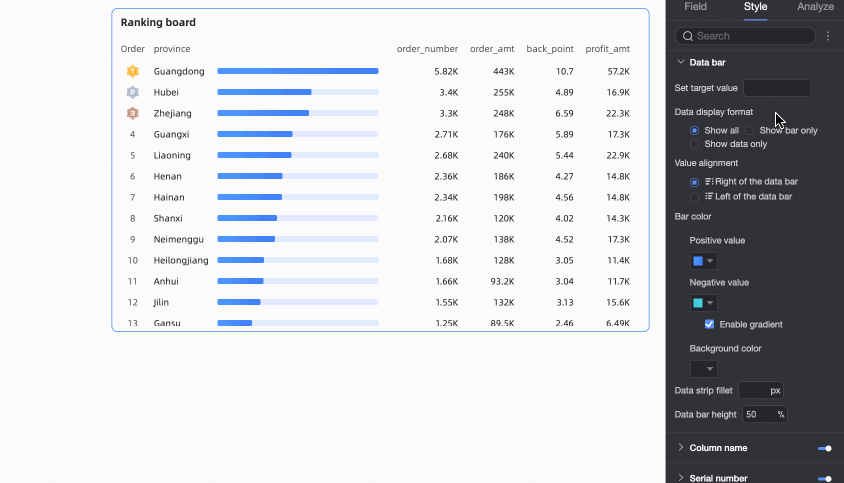
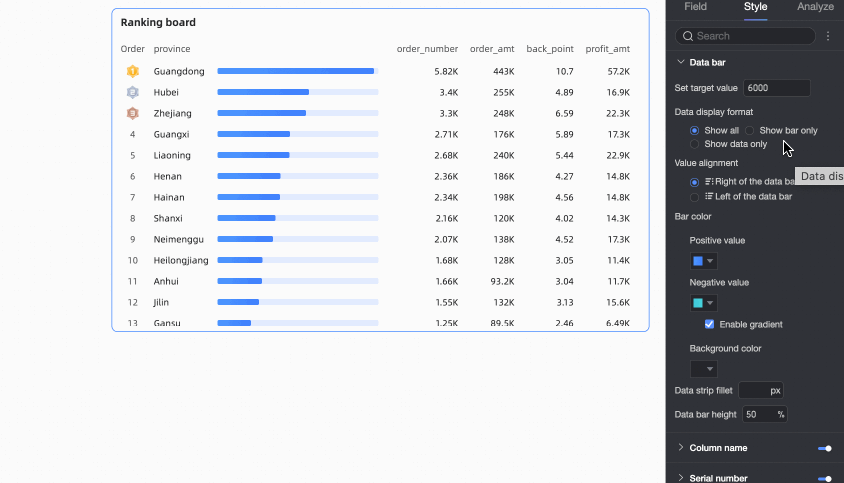

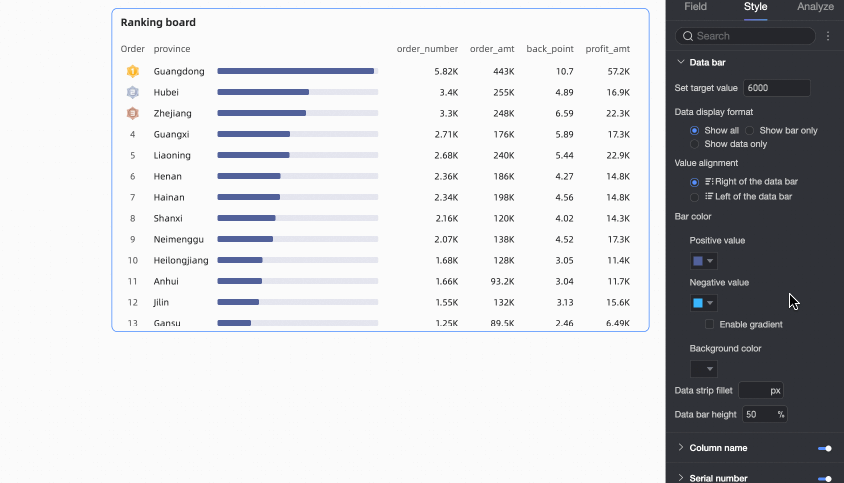
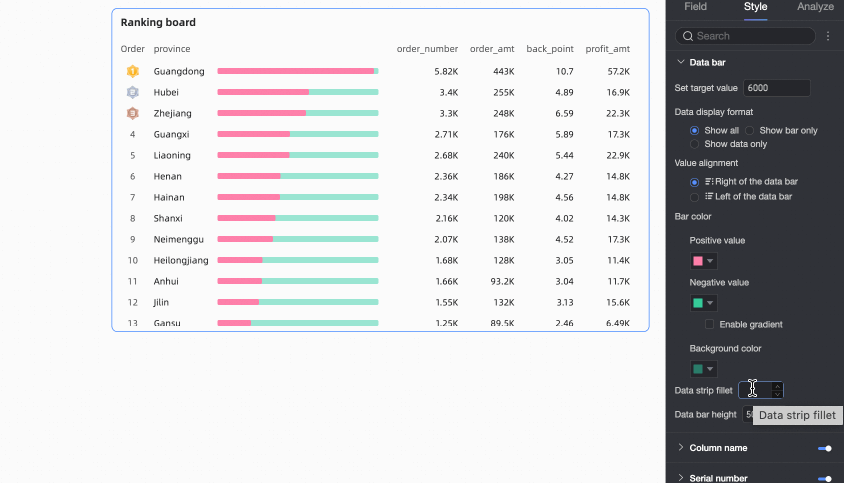
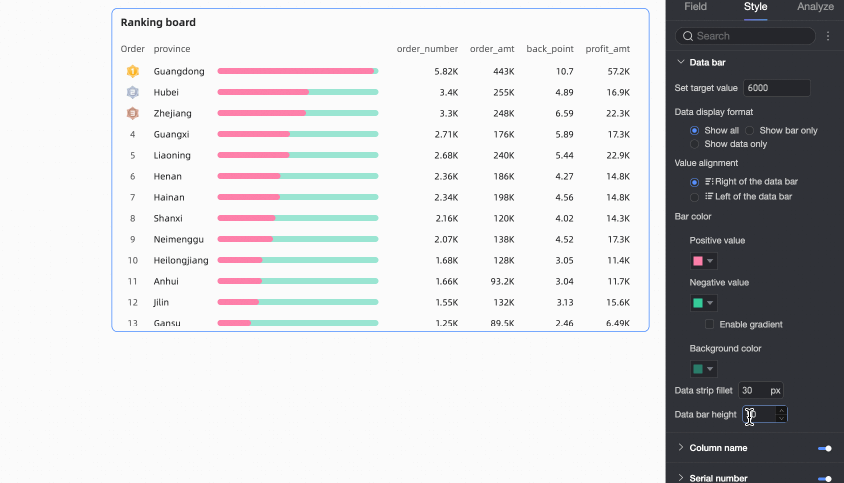
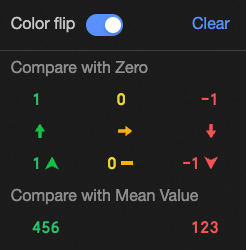

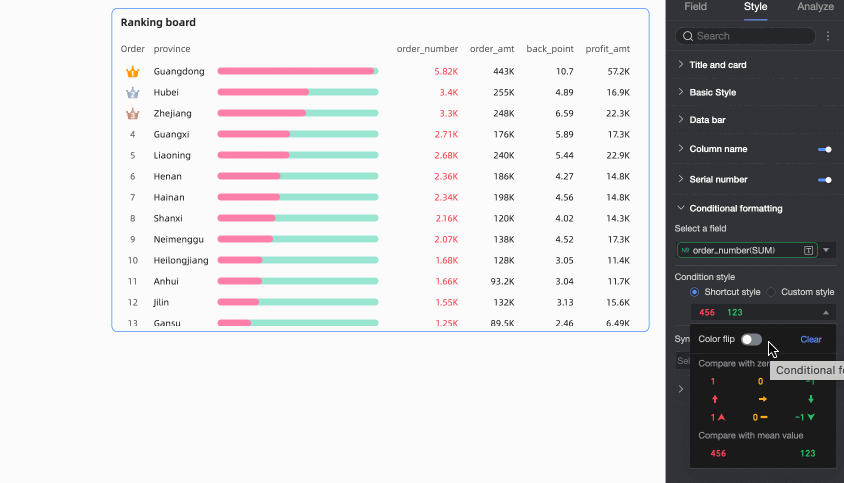
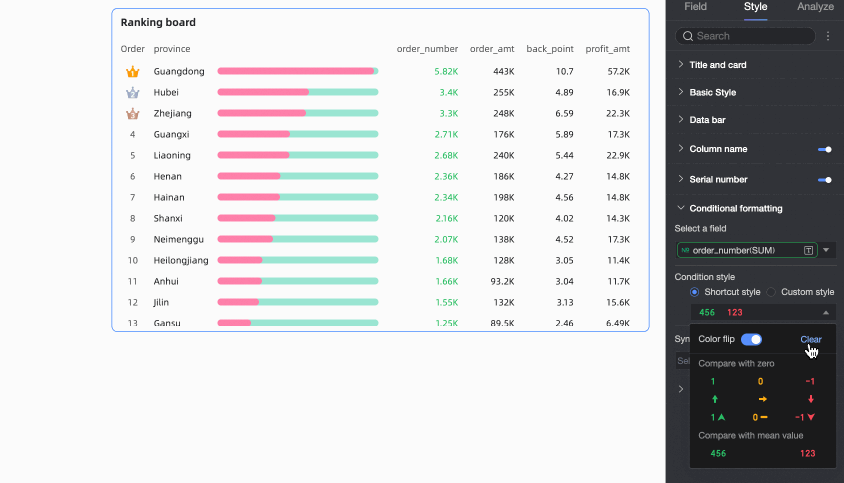
 On the Text tab, set conditional rules to display the current measure field text in highlight colors. You can configure conditional rules for the current field based on values of other fields.
On the Text tab, set conditional rules to display the current measure field text in highlight colors. You can configure conditional rules for the current field based on values of other fields.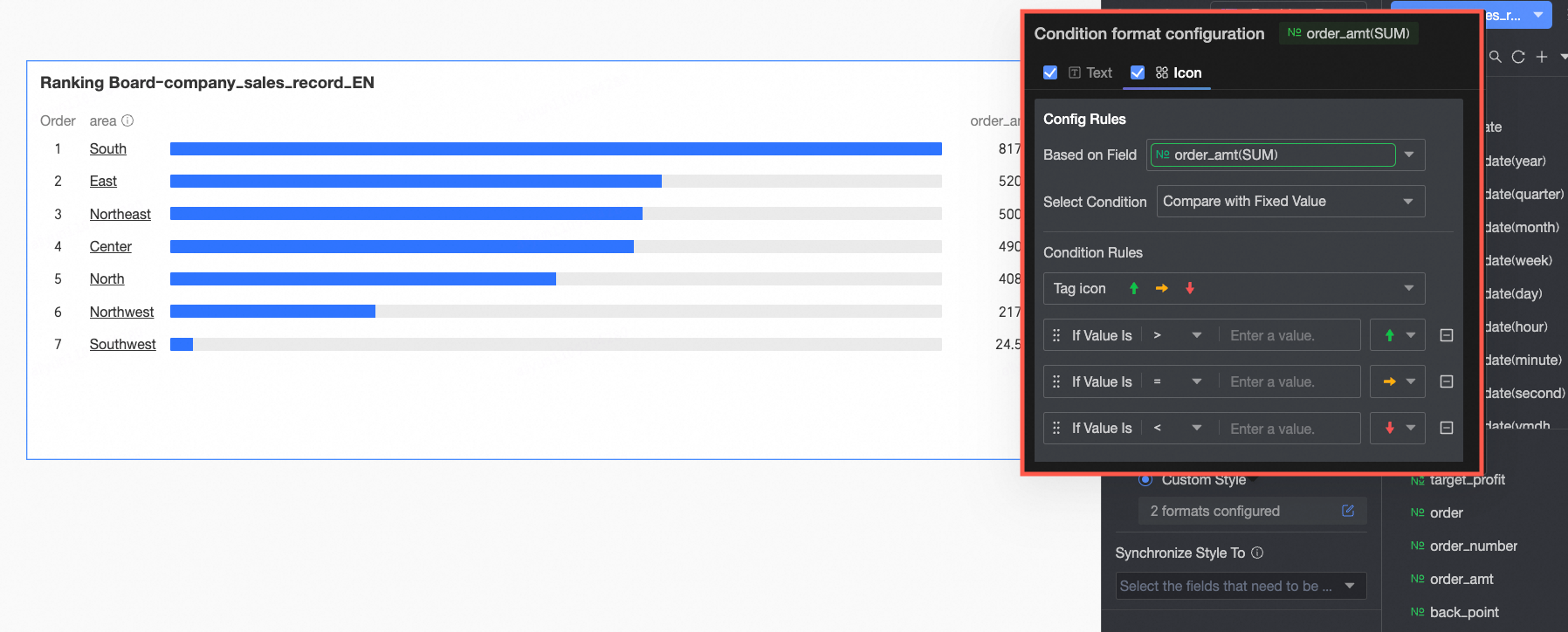 On the Icon tab, set icon marking rules for the current measure field. You can configure marking rules for the current field based on values of other fields.
On the Icon tab, set icon marking rules for the current measure field. You can configure marking rules for the current field based on values of other fields.